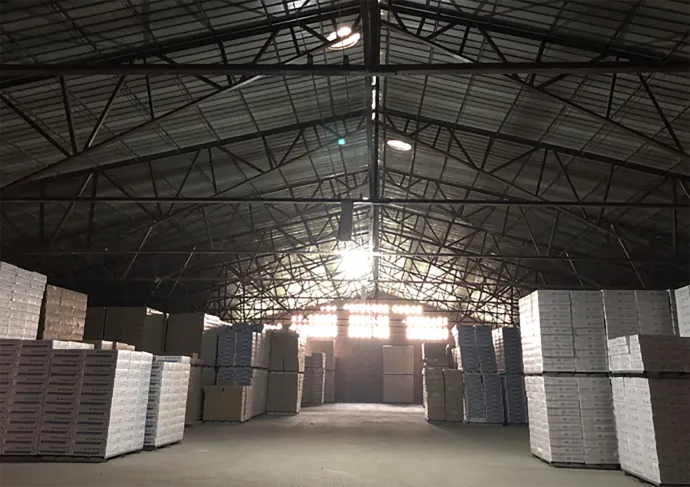Aug . 13, 2024 16:24 Back to list
Exploring Efficient Structural Designs Using T-Grid Ceiling Systems for Modern Architecture
Exploring T-grid Ceiling A Modern Solution for Aesthetic and Functional Spaces
In the realm of interior design and architecture, the significance of ceilings is often underestimated. However, one innovative solution that has gained traction in recent years is the T-grid ceiling system. Also known as a suspended ceiling or drop ceiling, T-grid ceilings are structured frameworks that support acoustic tiles or panels, providing functional benefits while enhancing aesthetic appeal. This article explores the features, advantages, and applications of T-grid ceilings, illustrating how they can transform spaces in both residential and commercial settings.
What is a T-grid Ceiling?
A T-grid ceiling consists of a network of T shaped metal grids that form a framework suspended from the main ceiling. This grid system supports lightweight ceiling tiles, which can be made from various materials, including mineral fiber, metal, and gypsum. The versatility in materials allows for an array of designs, patterns, and finishes, catering to diverse stylistic preferences and functional requirements.
Advantages of T-grid Ceilings
1. Aesthetic Flexibility One of the most appealing aspects of T-grid ceilings is their adaptability. The color, texture, and design of the ceiling tiles can be customized to suit any interior motif, whether it’s a sleek modern office or a cozy home. This flexibility allows designers to harmonize the ceiling with the overall theme of the space, creating a cohesive look.
2. Acoustic Control T-grid ceilings play a crucial role in sound absorption within a space. The acoustic tiles used in these ceilings can significantly reduce noise levels, making them ideal for environments such as offices, schools, and hospitals where sound control is vital. This feature fosters a more comfortable and productive atmosphere.
3. Accessibility The space between the T-grid system and the original ceiling provides easy access to electrical wiring, plumbing, and HVAC systems. This accessibility facilitates maintenance and repairs without the need for extensive demolition or disruption.
t grid ceiling

4. Energy Efficiency T-grid ceilings can contribute to a building's energy efficiency. With the right materials and insulation, they can help regulate temperature, reducing the need for heating and cooling, thereby saving on energy costs.
5. Fire Safety Many T-grid ceiling tiles come with fire-resistant properties, which enhance the overall safety of a structure. In public buildings or commercial settings, this feature is particularly crucial for ensuring compliance with safety regulations.
Applications of T-grid Ceilings
T-grid ceilings find applications across various sectors. In commercial spaces, such as offices, retail stores, and educational institutions, they help establish a polished and professional ambiance while ensuring sound and aesthetic quality. In residential spaces, they can be employed in basements, kitchens, or living rooms, providing homeowners with the opportunity to enhance their interiors without major renovations.
Additionally, T-grid ceilings have proven to be popular in creative environments like art studios or galleries, where the design flexibility allows for unique installations that can complement the exhibited artworks.
Conclusion
The T-grid ceiling is a practical and versatile solution that marries functionality with design. As interior spaces evolve, the demand for customizable and accessible ceiling systems will likely continue to grow. Whether for commercial or residential use, T-grid ceilings offer an effective means of enhancing the aesthetic and acoustic properties of a space while ensuring easy maintenance and compliance with safety standards. By embracing this modern ceiling solution, architects and designers can create environments that are not only visually appealing but also conducive to productivity and comfort.
-
Quality Ceiling Trap Doors & Access Panels | Easy & Secure AccessNewsAug.30,2025
-
Durable Ceiling T Grid Systems | Easy InstallationNewsAug.29,2025
-
PVC Gypsum Ceiling: Durable, Laminated Tiles for Modern SpacesNewsAug.28,2025
-
Pvc Gypsum Ceiling Is DurableNewsAug.21,2025
-
Mineral Fiber Board Is DurableNewsAug.21,2025
-
Ceiling Tile Clip Reusable DesignNewsAug.21,2025







